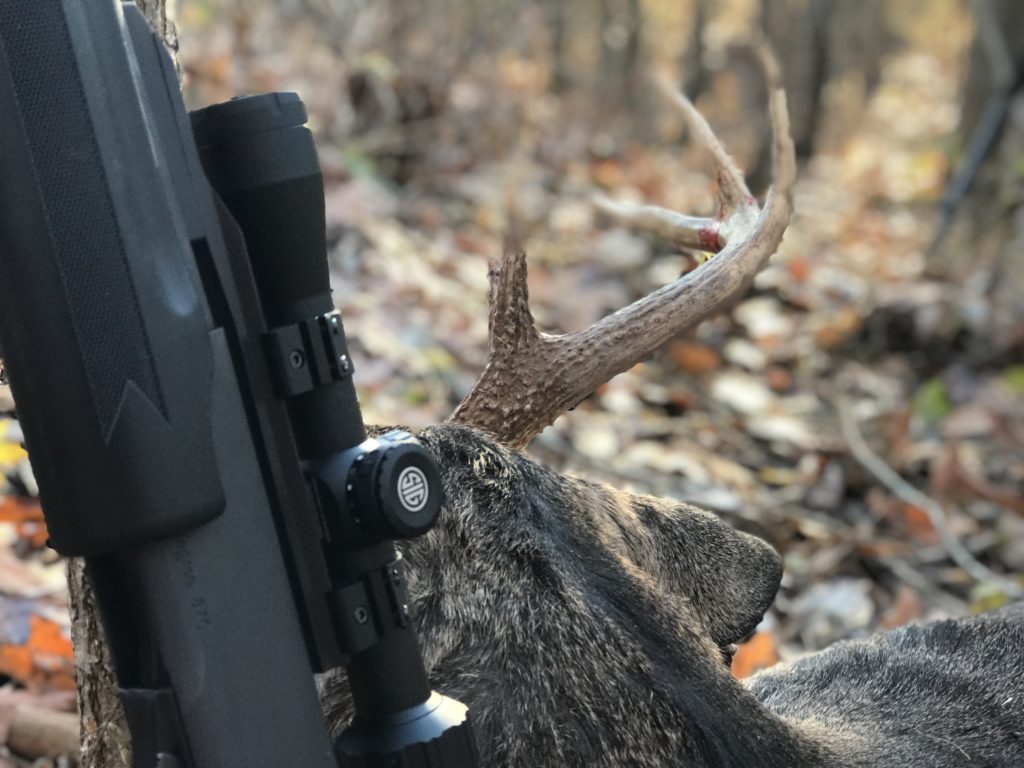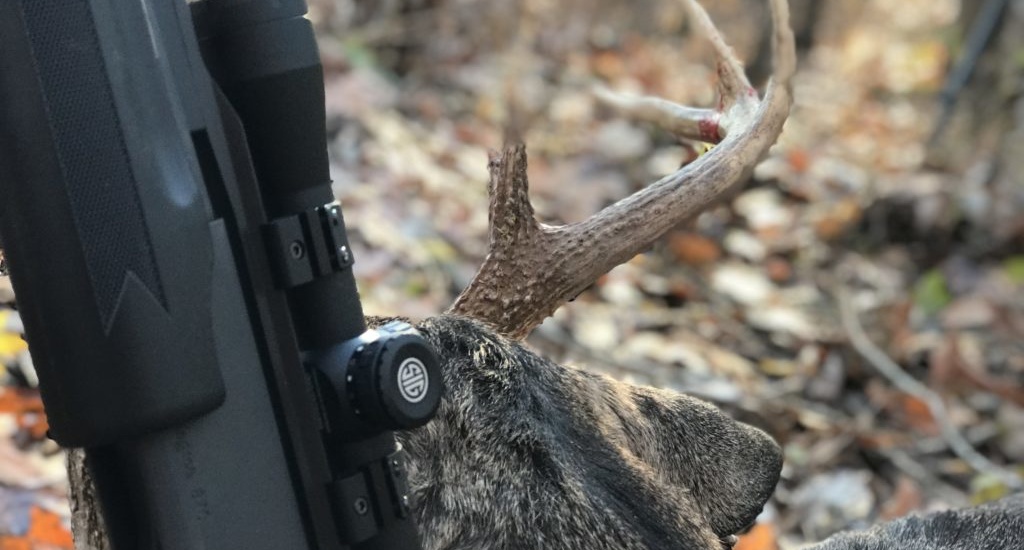If you want to become a better public land deer hunter, learn how to simply find deer on public land. Learn how these critters behave when the pressure is on, and you can hunt deer anywhere in North America. Trust me on this one, as I’ve spent more than 30 years learning the hard way. Granted most of my hunting today is on small private parcels here at home, almost everything I learned about pressured buck behavior was learned the hard way.

Whether you are gun hunting or bowhunting, a little bit of scouting now can pay off big time when next season rolls around. (photo by Dan Schmidt)
The same tactics for hunting deer on public land can and should be used when scouting public land for future hunts. Because my tactics for scouting public land are so similar to those I use for hunting the big woods (the two are synonymous in my home state of Wisconsin), I usually lump the two types of hunting as one when discussing them in public and private-land hunting situations.
In a nutshell, I use an uncomplicated approach that requires paying attention to what other hunters are doing over the seasons; realizing I can’t conquer a large property in just one season; and using a rather brazen push-and-probe method while scouting in the off-season. My approach for hunting various public properties is seldom the same, because each forest is different. However, I invariably count on a few educated guesses – even gut feelings – for stand placements based on my general knowledge of an area and some pre-hunt study of an aerial map.
[embedded content]
The best first-strike options are made when hunting areas with distinct ecotones (changes in topography). My ability to find productive whitetail funnels by merely looking at a photo or map really improved when I started hunting wild turkeys. The more I learned how turkeys used certain properties, the more I realized they were leading me to deer hotspots. In fact, one of my best bucks to date came from an area I had often dismissed because I had originally thought the surrounding woods were too nondescript to even bother hunting.
I found that spot – you guessed it – while turkey hunting. The area featured a large stand of mature white pines that gave way to some sparse red oaks and, farther north, a small tag-alder swamp. Although the pinewoods featured little understory, turkeys roosted in these monstrous trees. They’d fly up at the cusp of darkness and pitch down toward the oaks at daybreak. After observing this behavior for several days before turkey season, I realized these birds were so regular that I could have set my watch by their actions. It didn’t take long to figure those birds out, and, when I did, I literally stumbled over something else – a spot for a deer stand. Not so coincidentally, the turkeys used a deer trail to access the small oak ridge. I scouted the spot after turkey season and found a traditional rub line paralleled the trail, entering the ridge on a sideways angle through the pines.
Thankfully for me, several waist-size oaks that towered 30 to 40 feet high before they branched out also bordered the trail; they were perfect for my climbing stand. Most important, however, was the fact deer entered this transition zone from the southeast and predominant autumn winds in the area are out of the west/southwest. I became even more excited when I returned home and looked at an aerial photo, which revealed a dense hemlock stand to the southeast. Bingo! With very little effort, I had pinpointed a major bedding area and a prime stand site in a subtle travel corridor. Long story, short, you need to always be willing to learn something new no matter how much experience you already have in the woods.
Successful Public Land Hunt
Fast-forward five months. It was the second week of archery season and I was perched in one of those arrow-straight oaks. The sun was dipping toward the tree line when I heard something snap behind me and to my left. Slowly swiveling my head, I peered over my shoulder to see a hog-fat 8-pointer standing smack-dab in the middle of the trail. He was 50 yards away and somewhat wary. He didn’t smell me, but he was awfully cautious, probably because he was basically meandering through the wide-open pinewoods. He browsed, groomed himself and scanned his surroundings.
This buck no doubt had just left the thick bedding cover of that hemlock stand and was just getting started on a late afternoon feeding frenzy. I would have been content just watching that deer, but he did me the favor of eventually stepping into shooting range. My arrow found its mark, and his 135-inch rack now adorns my living-room wall.
That successful hunt would have never occurred had I never been bitten by the turkey-hunting bug and insisted on analyzing how the various terrain features coincided with each other. Converging ecotones are great spots to hunt, period. However, collectively, they are possibly the No. 1 factor to finding consistently productive spots on public land. Such areas can certainly be found through hands-on scouting, but you’ll waste a lot of time and energy going that route. Use aerial photos instead, and highlight several options before hitting the woods.
How to Scout Public Land
To make the most of your time, look for basic overlapping areas, such as:
1. Conifer swamps and mature hardwoods. These are the easiest places to pinpoint deer activity, because dense swamps provide cover for pressured deer. No matter where you are, pressured deer will use cover to bed and move throughout the day.
2. Creek bottoms and hardwoods. Bottoms provide everything a deer needs to survive: food, water and cover. Hardwood ridges also provide food, and, depending on pressure, ideal bedding areas. Unpressured deer often prefer ridges as bedding areas, because the elevated terrain allows them to better position themselves to scan their surroundings and take advantage of thermals. In fact, deer generally bed on the highest ground they can find and feed at lower elevations.
MORE: THE BEST HUNTING MAP APP ON THE MARKET?
3. Mature woods and logged areas. Deer love edges, especially where thick new growth borders old growth. These become natural travel corridors, especially in nondescript areas consisting of thousands of acres of otherwise unbroken forest.
4. High points and low points. Some areas, especially national forests with low deer densities, consist of nothing more than mile after mile of mature forest. These areas are extremely difficult to hunt, but success can be had when a hunter keys off of subtle ecotone changes, such as high ridges; saddles between ridges; strips of cover between wilderness lakes; and ditches, drainages and dry riverbeds. When hunting any piece of public land, never dismiss a thick tangle, swamp or marshy area. If you think an area seems “too wet” to hold deer, think again. Deer grow to maturity by seeking such areas and holding tight in them until hunting pressure decreases.
[embedded content]
[embedded content][embedded content]
— — — — —
Watch all of your favorite hunting and fishing programs on the new Pursuit Channel app:


